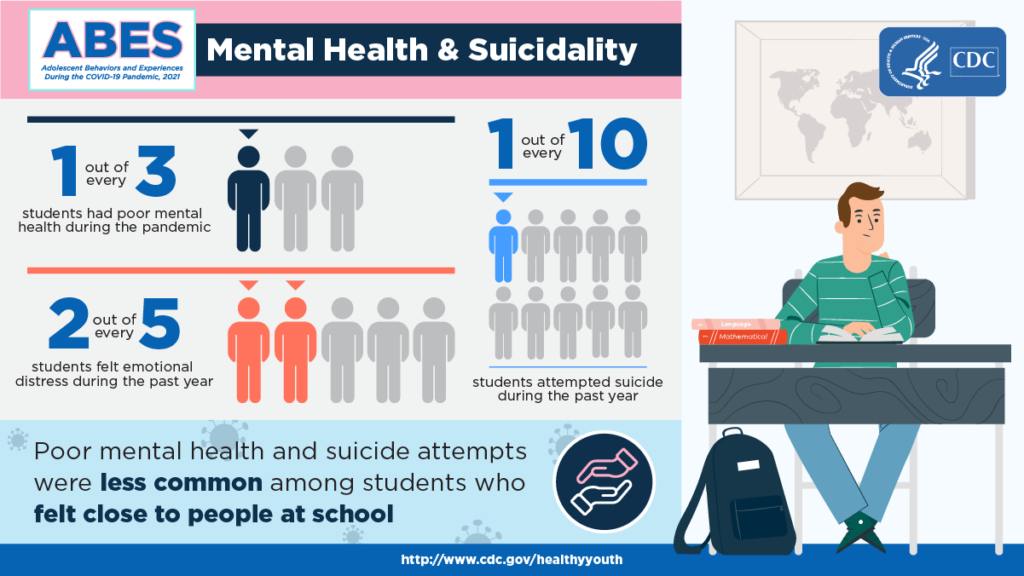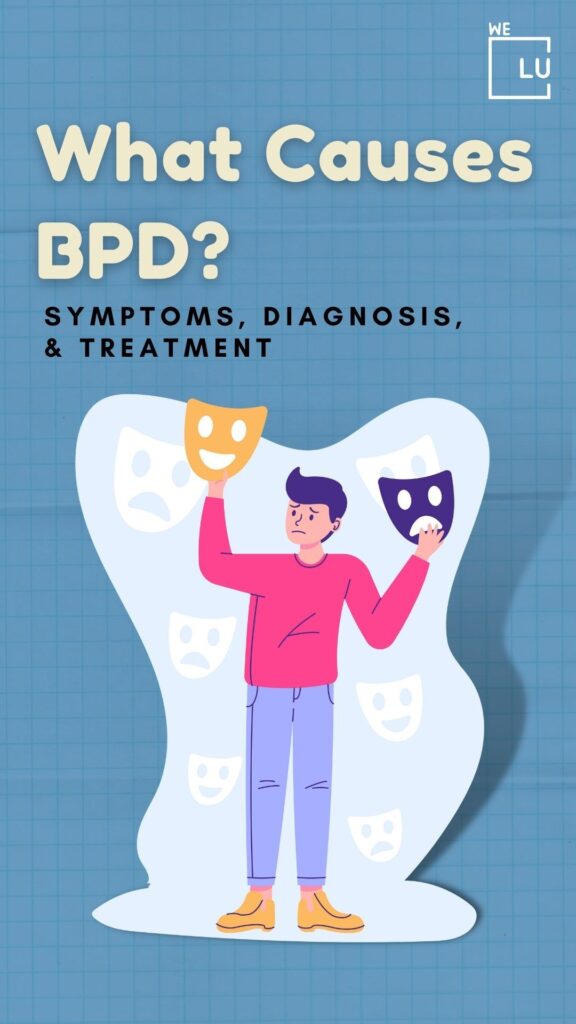What Is Splitting BPD?
Splitting in Borderline Personality Disorder (BPD) is a psychological phenomenon characterized by the tendency to perceive oneself, others, or situations as good or all bad, with little or no middle ground. It is a cognitive distortion that affects how individuals with BPD experience and interpret their relationships and the world around them.
When splitting occurs, individuals may alternate between idealizing and devaluing others, leading to unstable and intense relationships. This extreme dichotomous thinking can significantly impact their emotions, behavior, and overall functioning. Splitting is considered a defense mechanism that helps individuals with BPD cope with the intense emotions and fears associated with their condition. Understanding and addressing splitting is crucial in diagnosing, treating, and managing BPD.
BPD Splitting How Long Does It Last?
The duration of BPD splitting can vary from person to person and from situation to situation. Splitting episodes can be brief, lasting only a few minutes or hours, or persist for days, weeks, or even longer. The intensity and frequency of splitting can also vary, with some individuals experiencing it more frequently and intensely than others.
Several factors can influence the duration of splitting episodes. These include the individual’s overall mental health, the specific triggers or stressors involved, the level of emotional distress experienced, and the effectiveness of coping mechanisms and treatment strategies in managing the symptoms of BPD.
While splitting episodes can be distressing and disruptive, they are not permanent states. With appropriate therapy and support, individuals with BPD can learn to recognize and manage splitting tendencies, gradually reducing the duration and intensity of these episodes over time.
Building emotional regulation, self-awareness, and cognitive restructuring skills can contribute to more stable and balanced thinking patterns. The duration of splitting can be positively influenced by the individual’s commitment to therapy, personal growth, and ongoing self-care practices.

Skip To:
Learn More:
- Borderline Personality Disorder Treatment & Diagnosis
- Psychiatric Disorders, Symptoms, Causes, Types, and Treatment
- Obsessive Compulsive Personality Disorder & OCD
- CBT Therapy for Mental Health Disorders, Process, Efficacy, Techniques, Types & CBT for Co-Occurring Disorders
- Co-occurring disorders, Diagnosis, Risk Factors, Mental Health, Substance Abuse & Dual Diagnosis Rehab Washington
- We Level Up WA Mental Health Center
Borderline Personality Disorder Facts
Individual talk therapy may successfully treat BPD. In addition, group therapy and books about borderline personality disorder can sometimes be helpful. Medications have less of a role in the treatment of BPD. However, they can occasionally treat depression, other diseases that may coexist with this condition, and mood swings.
BPD Treatments
BPD was originally believed to be incurable. However, this isn’t the case because we know that BPD can be effectively treated. Therapy helps many BPD patients who are distressed to feel better.
Dialectical Behavioral Therapy
Psychologist Marsha Linehan developed dialectical behavioral therapy (DBT). This treatment teaches you to deal with challenging and overwhelming emotions. The most popular method of treating BPD is DBT. Each skill set aids in the reduction of BPD symptoms.
Dialectical behavioral therapy imparts four key skill sets to its patients:
- Interpersonal effectiveness.
- Emotional regulation.
- Distress tolerance.
- Mindfulness.
Mentalization-Based Therapy
Mentalization-based therapy helps you develop an awareness of your inner state. In mentalization-based treatment, fostering empathy for other people’s experiences is a key goal.
According to research published in 2018, this therapy may dramatically lessen the severity of BPD symptoms and co-existing diseases while enhancing the quality of life. However, the authors point out that additional study is still required.
Medication
No single medication is effective for BPD, but medications may relieve some symptoms.
As an illustration, medicines may support mood stabilization. Discuss your symptoms with a doctor if you believe medication could help you.
End the Emotional Pain. Get Your Life Back.
Feeling Depressed, Anxious or Struggling with Mental Health Illness? Get Safe Comfortable Mental Health Dual Diagnosis High-Quality Therapy From Counselors That Care. Begin Your Recovery Now.
Hotline: (509) 348-4077

Borderline Personality Disorder Statistics
The most effective way to treat BPD is through an interprofessional team composed of psychiatrists, psychologists, pharmacists, mental health nurses, and social workers. According to recent studies, 1.6% of people in the United States have BPD. It might seem like a modest percentage, but considering how big the United States is, you may realize that 1.6% represents a sizable portion of the population. One of the hardest mental health diseases to treat is borderline personality disorder.
1.4%
According to estimates, BPD affects 1.4% of adult Americans.
Source: NCBI
75%
Women make up about 75% of those with BPD diagnoses.
Source: NCBI
20%
According to surveys, borderline personality disorder affects 20% of patients in inpatient psychiatric facilities.
Source: NCBI
Get Help. Get Better. Get Your Life Back.
Searching for Accredited Dual Diagnosis Mental Health Centers Near You?
Even if therapy failed previously, or are in the middle of a difficult crisis, we stand ready to support you. Our trusted behavioral health specialists will not give up on you. When you feel ready or just want someone to speak to about counseling alternatives to change your life call us. Even if we cannot assist you, we will lead you to wherever you can get support. There is no obligation. Call our hotline today.
FREE 24/7 Dual Diagnosis Mental Health Services Hotline
BPD Splitting Symptoms
The symptoms of BPD splitting primarily revolve around extreme shifts in perception and judgment, leading to unstable and polarized views of oneself and others. Here are some common symptoms associated with BPD splitting:
- Dichotomous Thinking: Splitting involves viewing people, situations, or oneself in black-and-white terms, with little room for gray areas or nuance. Individuals may oscillate between idealizing someone as all good and suddenly devaluing them as all bad.
- Idealization: During a splitting episode, individuals may excessively praise and idolize someone, perceiving them as perfect, flawless, and worthy of admiration. They may place the person on a pedestal and believe their presence will solve all their problems.
- Devaluation: Conversely, individuals may abruptly shift to devaluing others, perceiving them as entirely negative, flawed, or even evil. They may attribute all their problems or negative experiences to the other person, vilifying them and disregarding any positive qualities they may possess.
- Unstable Relationships: Splitting can profoundly impact relationships, leading to intense and volatile dynamics. Individuals with BPD may experience rapid shifts in their feelings toward others, leading to frequent conflicts, breakups, or extreme emotional reactions within relationships.
- Fear of Abandonment: Splitting can be driven by a deep-seated fear of abandonment, causing individuals to cling to others during idealization phases and push them away during devaluation phases. This fear often stems from past experiences of real or perceived abandonment or rejection.
- Emotional Instability: Splitting is accompanied by intense emotional experiences. Individuals may rapidly swing from euphoria and elation during idealization to anger, despair, or emptiness during devaluation. These emotional fluctuations can be distressing and challenging to manage.
- Impulsive Behavior: Splitting can contribute to impulsive behaviors, such as reckless spending, substance abuse, self-harm, or impulsive relationship decisions. These behaviors may serve as a coping mechanism to regulate intense emotions associated with splitting episodes.
Not all individuals with BPD experience splitting, and symptoms can vary in severity and frequency. Diagnosis and treatment should be sought from mental health professionals who can provide a comprehensive assessment and personalized care.
First-class Facilities & Amenities
World-class High-Quality Mental Health Services & Behaviroal Health Substance Abuse Treatment
Rehab Centers TourRenowned Mental Health Centers. Serene Private Facilities. Inpatient Rehab Programs Vary.
Mental Health Helpline: (509) 348-4077Proven recovery success experience, backed by a Team w/ History of:
15+
Years of Unified Experience
100s
5-Star Reviews Across Our Centers
10K
Recovery Success Stories Across Our Network
- Low Patient to Therapist Ratio
- Comprehensive Dual-Diagnosis Treatment
- Complimentary Family & Alumni Programs
- Coaching, Recovery & Development Events
- Comfortable Onsite Medical Detox Center
BPD Splitting Meaning & Causes
The causes of BPD splitting are multifaceted and can be influenced by a combination of genetic, environmental, and psychological factors. While the exact causes are not fully understood, several contributing factors have been identified:
- Biological Factors: Evidence suggests that biological factors play a role in developing BPD and its associated symptoms, including splitting. Genetic predisposition, neurotransmitter imbalances, and abnormalities in brain structure and functioning have been implicated in BPD.
- Early Life Experiences: Traumatic experiences, neglect, or abuse during childhood, especially in the form of inconsistent or invalidating parenting, can contribute to developing BPD and splitting tendencies. These experiences can disrupt the development of emotional regulation skills and lead to difficulties in forming stable and healthy relationships.
- Invalidating Environments: Growing up in an invalidating or unstable environment where emotions are dismissed, ignored, or invalidated can contribute to developing BPD and splitting. The lack of consistent emotional validation and understanding can reinforce the dichotomous thinking patterns characteristic of splitting.
- Cognitive and Emotional Factors: Individuals with BPD may have certain cognitive and emotional vulnerabilities that make them more susceptible to splitting. These vulnerabilities include difficulties with emotional regulation, a heightened sensitivity to perceived rejection or abandonment, and a tendency to view the world in extremes.

- Coping Mechanism: Splitting can serve as a coping mechanism for individuals with BPD to manage intense emotions, fear of abandonment, and feelings of insecurity. Individuals may temporarily alleviate distress and gain control by dividing people or situations into all good or bad.
While these factors may contribute to the development of splitting in BPD, each individual’s experience is unique. BPD is a complex disorder, and a comprehensive understanding of its causes and treatment requires a thorough evaluation by a mental health professional. Effective treatment approaches, such as dialectical behavior therapy (DBT), can help individuals with BPD develop healthier thinking patterns and improve their overall well-being.
Splitting BPD Examples
To provide a better understanding of splitting in BPD, here are a few examples that illustrate how this cognitive distortion manifests:
- Idealization Example: Sarah meets a new friend, Amy, and instantly becomes infatuated with her. She believes Amy is the most amazing person she has ever met, showering her with excessive praise and admiration. Sarah sees Amy as flawless, attributing all positive qualities to her and becoming completely dependent on her for emotional support. She idealizes Amy to the point where she believes Amy can do no wrong.
- Devaluation Example: Mark is in a romantic relationship with Jane. During a disagreement, Jane unintentionally upsets Mark. At that moment, Mark’s perception of Jane suddenly shifts. He devalues her, seeing her as cruel and manipulative. Mark focuses solely on Jane’s negative traits and ignores any positive aspects of their relationship. He becomes convinced that Jane deliberately tries to hurt him, leading to intense anger and resentment towards her.
- Unstable Views Example: Lisa has a coworker named John. One day, John compliments Lisa on her work, and she instantly idealizes him, considering him the best coworker ever. However, John makes a minor mistake on a project the following day. Lisa’s perception of him quickly shifts to devaluation. She believes he is incompetent and begins criticizing him, disregarding their previous interactions’ positive aspects.
- Oscillating Relationships Example: Michael is dating Emily. They have a passionate and intense relationship. However, during a heated argument, Michael feels emotionally hurt and betrayed by Emily. In response, he abruptly ends the relationship and cuts off all contact. He views Emily as toxic and entirely responsible for the downfall of their relationship. A few days later, Michael experiences a wave of loneliness and longing for Emily. He reaches out to her, idealizing her again and wanting to reconcile.
These examples highlight the rapid shifts in perception and extreme evaluations that individuals with BPD may experience during splitting episodes. It’s important to note that these examples are generalizations, and the specific manifestations of splitting can vary among individuals with BPD.
How to stop splitting BPD? Coping Strategies
Managing and reducing splitting tendencies in BPD can be challenging, but with consistent effort and appropriate strategies, it is possible to gain better control over this cognitive distortion. Here are some approaches that can help:
- Therapy: Seek professional help from a mental health professional, preferably one experienced in treating BPD. Dialectical Behavior Therapy (DBT) is a widely recommended therapeutic approach for BPD that focuses on emotion regulation, mindfulness, interpersonal effectiveness, and distress tolerance. Through therapy, you can develop skills to recognize and challenge splitting patterns.
- Awareness and Mindfulness: Practice self-awareness and mindfulness to observe your thoughts and emotions without judgment. Pay attention to moments when you notice yourself engaging in black-and-white thinking. By being aware of your splitting tendencies, you can begin interrupting the automatic thought processes associated with splitting.
- Cognitive Restructuring: Challenge and reframe your thoughts by considering alternative perspectives. When polarizing someone or a situation, identify and acknowledge the gray areas. Consider the possibility that people can have positive and negative qualities, and situations can be more complex than they initially appear.
- Emotion Regulation: Develop healthy strategies for managing intense emotions associated with BPD. Engage in activities promoting emotional regulation, such as deep breathing exercises, journaling, or hobbies. Learning to tolerate distressing emotions can reduce the need to split as a coping mechanism.
- Validate and Self-Validate: Practice validating your own emotions and experiences. Acknowledge that your feelings are valid, even if they may be intense or contradictory. By self-validating, you can reduce the reliance on external validation, which can contribute to splitting.
- Healthy Boundaries: Establish and maintain healthy boundaries in your relationships. Setting clear boundaries can help manage expectations and prevent idealization or devaluation based on temporary circumstances. Communicate your needs and limits effectively.
- Self-Care and Support: Engage in self-care activities that promote emotional well-being, such as exercise, maintaining a balanced lifestyle, and connecting with supportive friends or loved ones. Surrounding yourself with a strong support network can provide stability and understanding during challenging moments.
World-class, Accredited, 5-Star Reviewed, Effective Mental Health Dual Diagnosis Programs. Complete Integrated Inpatient Rehab with Free Post Discharge Therapy Planning.
Hotline: (509) 348-4077End the Emotional Pain Rollercoaster. Gain Stability & Happiness Through Recovery Treatment. Start Mental Health Counseling Today. Get Free No-obligation Guidance by Behaviroal Health Specialists Who Understand Mental Health Recovery.
Popular BPD Splitting FAQs
-
Is BPD Splitting Dangerous?
BPD splitting can be dangerous, particularly regarding its impact on relationships, emotional well-being, and overall functioning. Extreme shifts in perception and judgment can lead to unstable and volatile interpersonal dynamics, frequent conflicts, and difficulty maintaining healthy relationships. Splitting can also contribute to impulsive behavior, self-harm, or suicidal ideation, especially during intense emotional distress. However, with appropriate treatment and support, individuals with BPD can learn to manage and reduce the harmful effects of splitting.
8 Steps & Tips for Maintaining Your Mental Wellbeing Informative Video
Video Script
At We Level Up WA, we provide advanced mental health services tailored to the individual needs of our clients. Our highly trained professionals deliver personalized therapy programs based on evidence-based practices to address specific challenges and goals. With a range of state-of-the-art amenities, including outdoor relaxation spaces, our facility is dedicated to promoting holistic healing.
Our center strongly emphasizes creating a compassionate and supportive environment, empowering clients to engage in their journey to recovery actively. We are committed to fostering lasting mental well-being and guiding individuals toward personal growth and transformation. By choosing our center, you are taking a crucial step towards a brighter future, where you will receive cutting-edge treatments and nurturing care.
Experience Transformative Recovery at the We Level Up Treatment Center.
See our authentic success stories. Get inspired.
Get the help you deserve.



Start a New Life
Begin with a free call to a behavioral health treatment advisor. Learn more about our dual-diagnosis programs. The We Level Up treatment center network delivers recovery programs that vary by each treatment facility. Call to learn more.
- Personalized Care
- Caring Accountable Staff
- World-class Amenities
- Licensed & Accredited
- Renowned w/ 5-Star Reviews
We’ll Call You
Search We Level Up WA / BPD Splitting & Resources
Sources
- National Institute of Mental Health (NIMH) – Borderline Personality Disorder: Treatment Overview Website: https://www.nimh.nih.gov/health/topics/borderline-personality-disorder/index.shtml#part_153949
- Substance Abuse and Mental Health Services Administration (SAMHSA) – Borderline Personality Disorder Treatment Website: https://www.samhsa.gov/conditions/borderline-personality-disorder/treatment
- MedlinePlus – Borderline Personality Disorder: Treatment Website: https://medlineplus.gov/borderlinepersonalitydisorder.html#cat_90
- National Alliance on Mental Illness (NAMI) – Borderline Personality Disorder Treatment and Support Website: https://www.nami.org/About-Mental-Illness/Mental-Health-Conditions/Borderline-Personality-Disorder/Treatment-and-Support
- Office on Women’s Health – Borderline Personality Disorder: Treatment Website: https://www.womenshealth.gov/mental-health/mental-health-conditions/borderline-personality-disorder/treatment
- National Library of Medicine – Borderline Personality Disorder: Treatment Options Website: https://www.ncbi.nlm.nih.gov/books/NBK557524/
- Centers for Medicare & Medicaid Services (CMS) – Borderline Personality Disorder: Treatment Coverage Website: https://www.cms.gov/medicare-coverage-database/details/nca-decision-memo.aspx?NCAId=282
- U.S. Department of Veterans Affairs – Borderline Personality Disorder: Treatment Options Website: https://www.mentalhealth.va.gov/borderline-personality-disorder.asp#treatment
- Health Resources and Services Administration (HRSA) – Borderline Personality Disorder: Treatment Resources Website: https://findahealthcenter.hrsa.gov/search-results?field=Borderline+Personality+Disorder
- National Institute on Drug Abuse (NIDA) – Comorbidity: Borderline Personality Disorder and Substance Use Disorders Website: https://www.drugabuse.gov/publications/research-reports/common-comorbidities-substance-use-disorders/borderline-personality-disorder